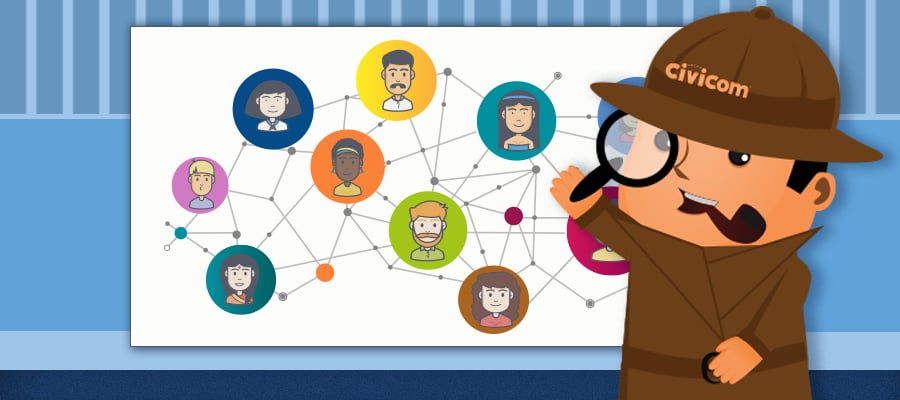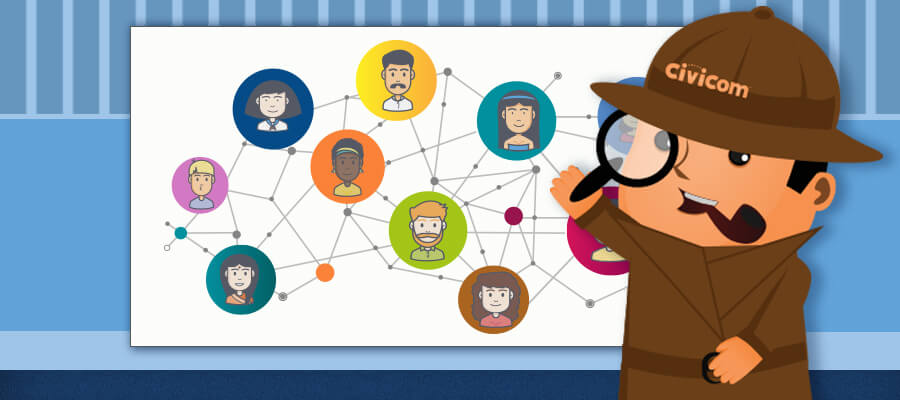Good market research is crucial to creating a strong business strategy. In today's competitive business landscape, knowing and understanding the consumer is a critical factor in achieving brand success. To recognize a market's opinions and interests results in great leverage in identifying the right approach and crafting the correct messaging for a brand. Instead of just focusing on internal marketing opinions, getting acquainted with what product users really think and value helps a company develop and maintain a better grasp of how to reach their target market and improve their strategies in the long run. This is a major reason why market research exists, and why the role of market research respondents is so important.
In developing effective market research, it is essential to find the right respondents that are best suited for a study. While respondent recruitment is a common process during research, it is important to note that determining what metrics to use in selecting respondents can make or break the research process. Through rigorous sourcing and screening processes, as well as a clear definition of the research expectations, recruiters can streamline and narrow down the search for determining the respondents best fit for a study.
While the recruitment process typically happens on a case-to-case basis, this guide will tackle some of the key points and provide some tips on how to effectively pool and recruit qualified respondents for a market research study. We will be discussing the following:
- Goal Setting for Market Research Recruitment
- Sourcing of Market Research Respondents
- Screening Processes for Market Research Respondents
- Getting Respondents Ready to Participate in Research
- Incentives for Market Research Respondents
- Managing Respondent Data Privacy
Goal Setting for Market Research Recruitment

Each recruitment process starts with laying down the goals, objectives, and expectations of a project. It is imperative that these components are discussed and agreed upon before moving forward with searching for the right respondents, in order to minimize any issues that may arise regarding respondent qualifications as a study progresses. Strong communication between the client, the market researcher, and the recruiter is vital. Team effort is a key indicator in forecasting the success of a project.
Determining the specific focus of the research and narrowing down the profile of the respondent target are crucial elements that must be identified during the goal-setting phase of recruitment. While the ideal participants are tagged as those who use or consume the client’s product and services, there are also many instances when the given target population is too broad or vague, making ideal respondents harder to find. Specificity is the key to nailing recruitment that will result in the gathering of quality data. This is why it is best to clearly develop the profile of possible respondents as early as possible in the study process.
Additional consideration regarding confidentiality clauses must also be discussed during goal setting. Providing anonymity can help increase the number of participants willing to participate in a study. This can be determined depending on the needs of the client project and is ultimately decided on a case-to-case basis.
There are basic components that are normally considered prior the start of recruitment of respondents for market research:
- Age
- Gender
- Income
- Education
- Working Status
- Location
- Frequency of usage/purchase of product/service
- Users of competitor’s products
However, there is a broad gap between what might be considered a good target respondent for a general consumer study and what type of individual should be recruited for a specialty study. Consumer studies are relatively easy to fulfill. Differences in profile typically include such variations as gender, age, location, and types of product used, as noted above. The more general the product or service, the more general the type of consumer that can be recruited, and thus the easier of the recruit.
On the other hand, it can be more difficult to recruit respondents for studies on specialized fields, like finding willing participants from employees or executives from a specific line of work, who, understandably, might not be as available because of their busy work schedule. Similarly, this challenge can also be encountered when recruiting respondents for healthcare studies. Healthcare professionals like doctors, nurses, or medical technicians, as well as patients and their medical records are covered by the Health Insurance Portability and Accountability Act or HIPAA. Therefore, their data is required by law to be handled with utmost security and confidentiality and cannot simply be uncovered and used for respondent recruitment.
Sourcing of Market Research Respondents

Once the target profile for respondents is identified, the next step towards recruitment is sourcing. Thoroughly understanding the target population is a significant advantage during sourcing. Looking in the right place at the right time is also necessary to find the right people. For example, if you are recruiting for a study in Germany, but you are based in the United States, it is important to understand what is different about what motivates people to share their opinions on products. If you are based in China and are recruiting respondents in a Catholic country, it is important to not ask people to participate during the Christmas season, or Holy Week leading up to Easter. In other words, becoming familiar with the culture you are recruiting in is essential in having the right respondents at the right time, which will lead you to the best results.
As technology continues to advance, more channels for sourcing are being created and explored by recruiters. Here are some of the usual approaches, including the industry-tested ones, which most recruiters still work with:
- Respondent Panels
- Client database of their consumers
- Existing lists from recruitment firms
- Running ads
- Purchased ListsAssociation/Company Directories
- Crowdsourcing
- Word-of-mouth
- Snowball Sampling
- Social Media
Snowball sampling is a technique where existing study subjects recruit more people from among their acquaintances.
Social media has recently grown in popularity as an avenue for recruiting. It has also opened the door for more companies and individuals who want to recruit to become players. The newly popular social media tools that recruiters are now using are Facebook, Twitter, Linkedin, MeetUp and Pinterest. These are great tools for finding respondents for consumer studies.
B2B, or business to business studies, where companies that sell business products want to talk to employees of companies that use those products, is a harder field to break open. These people are typically not in recruiting databases. Therefore they take time to find and BtoB projects as a result take longer to recruit than consumer studies.
Research type: Understanding if the research is qualitative or quantitative eliminates a certain options from possible sourcing channels. It also help dictates if the sourcing process would require more research or if there are readily available resources that the recruiter can easily tap. For example, a mobile study targeting 1,000 completes is going to be fulfilled through a panel or from a list.
Type of participants: Knowing if the targets are consumers, business people, or medical professionals is the first step in looking into sourcing options for a study. But it it equally important to know the specifics further. A medical study, for example, might target doctors, but will not be successful unless the full profile of the doctor’s required specialty field and experience is clearly laid out before recruiting begins.
Rarity of the population’s interest: In case of a highly niched population, additional research may be required to find participants who are willing to join a study. Depending on the sensitivity or the complexity of the data being asked, specific target market groups can be elusive, and it is best to prepare before diving into sourcing prospect respondents. A set of thirty web-enabled in-depth interviews with compliance officers at fortune 1000 companies is going to require a personalized approach to contact and persuade this audience to participate.
Screening for Market Research Respondents

Having a carefully designed screener that is understood by the recruiter is the first step in getting to the right respondents. It is essential for the recruiter to carefully review the screener with the client in advance of any recruiting activity, to assure there are no conflicting statements. An example of conflicting messages might be one section of a screener asking for people with twenty or more years of experience in the research topic, while another might ask for all respondents to be between the ages of 25 and 35. Obviously one of these two criteria has to be modified before recruiting can begin, because they are in directly conflict with one another. might request
Screening for market research respondents is usually on a case-to-case basis. While most market research recruitment firms practice stringent processes, this type of screening approach may not be applicable to all types of research.Continuous monitoring and strict adherence to the screener criteria will produce the best results and no matter whether projects are as short as a three-day online community or are as long as a full year.
In recent years there has been a decline in the number of individuals that are open to participating in market research studies. With decreased openness to participation, especially for highly specialized populations, it is important to grab the attention of promising participants by using quick yet substantial screening processes. Recruiters should encourage clients to let them focus entirely on matching the qualifications an avoid taking up a potential respondent’s valuable time with in-depth questions that can be addressed in the actual market research. This will increase the likelihood that potential respondents are captured as a part of the study.
Aside from the usual questions that focus on qualifications, another aspect that must be checked during screening is the frequency of the respondent's participation in market research. There is a body of individuals who have made it a profession to participate in market research, seeing it as a steady source of income through incentives payments that are given to research participants in many studies. It is wise to be on the lookout for people who have taken advantage of system in this manner and who may present themselves as meeting a study’s criteria when they in fact do not. Using professional market research respondents is likely to significantly skew data, making it inaccurate and unreliable. Screening processes must eliminate these “professionals” from entering a quality respondent population and thus manipulating the results of a study. The usual rule of thumb is to take respondents that have not participated in any similar project within the past six to twelve months. Avoiding this hurdle will result in more accurate research.
Getting Respondents Ready to Participate in Research
After finding qualified respondents for a study, another crucial step when conducting a market research interview or focus group online is getting them ready through the process of using the technology or platform. This involves preparing the technology that would be used - both by the interviewer and the respondent/s, especially for mobile and web-enabled interviews and focus groups, as well as scheduling the respondent for interview day.
For example, a marketing research services provider would confirm the respondent’s technology capability - is the computer they’re using compatible with the study requirements? Do they have a stable connection? Would they need to use their mobile phone for a mobile usability study? Would they need a webcam and is it working properly? Or do they need to have something installed before the interview proper? Upon confirming that all the necessary hardware and software needs are met, the respondent is set and all ready to go. This step is vital in making sure that the interview goes smoothly and without technical trouble.
Incentives for Market Research Respondents

Participants typically receive an incentive for their valuable time and contribution to a study. Monetary incentives are often used to facilitate recruitment and motivate participation among individuals who might otherwise not respond. The question of compensating or paying research participants raises ethics questions, but there is no clear guidance or consensus on this important topic. Market research advisory groups suggest that any incentive used should be “reasonable and proportionate” which means that incentives should be considered on a project-by-project basis and based on the demographics of the participants and the scope of what they are expected to do.
There are multiple motives for why people agree to participate in research studies. Some of the softer reasons include the the belief that they have value to contribute and that their contribution will make a difference in the product or service being studied. They perceive that they can have an influence on big brands, thus seeing themselves as a player in designing a brand identity or product formula. The drive to help the world be a better place is an altruistic factor that motivates people who see it as their role to do what they can to improve society in general. Medical studies typically draw people who believe that their participation will improve the medical experience for others with the same condition, or contribute to the advancement of a cure for their health care condition.
While there is a place for altruistic motives for participating in research studies, the most popular motivation for research participation is payment in the form of financial gain. Incentives are typically paid in cash equivalents such as vouchers or gift cards. Some consumer product companies also pay incentives in the form of company merchandise or coupons..
Some categories of respondents require a larger incentive. For example, specialized doctors expect a bigger incentive compared to an average consumer. These market research respondents are notoriously hard to come by. While many physicians do participate in research panels and are on call to participate, client sponsors often want fresh respondents who bring new ideas rather than doctors who participate in research for a living. This presents a challenge because the higher the level of physician, the more difficult it is to recruit them to a study. But particularly for pharmaceutical companies that must get physician feedback on rationales for prescribing decisions, it is critical to include these doctors in research because patient health is at stake in the formulas these companies use in the drugs they manufacture.
In cases where participants are not allowed to accept gifts or incentives, making a donation to the charitable institution of choice in the participant name is a great option, and often motivates the person to participate more than a cash payment would. Sharing the research findings with the participants when possible can also be an attractive and motivating incentive, especially if it is a medical or business to business study and the research outcomes would be beneficial to all participating organizations.
Reimbursement for expenses incurred in the research process is another component of compensation for time spent. For example, in a mobile research study, the respondent's mobile device is typically used to conduct the research. This may result in use of the respondent’s data plan to record videos or transmit information. In such cases, respondents may be paid an expense allowance, particularly if the study runs for a long time. If respondents have to travel, they are sometimes reimbursed for mileage or for extra time spent driving.
Incentives can be given anytime within the project. The incentive comes as a token of appreciation for participation effort. The industry standard is to pay the incentive after the study. This is to both help participants to stay impartial throughout the process and remain engaged until the end. For longer projects there are sometimes milestone payments for meeting certain requirements on time or at the completion of certain activities. Some studies pay bonuses for completion. Point systems are often used in longitudinal studies to track incentives earned. This gives participants a way to measure their own progress and have a sense of accomplishment that is related to the value they have provided, and to see where they stand in the process.
Incentives can also be helpful in spreading the word about the study to qualified others Many recruiters encourage respondents to tap others about the study opportunity and further incentivize them when they have produced a qualified candidate.
Incentives payments boost participant morale and enable organizations to interact with respondents who can help them better understand how people think and interact with their products and services. In summary, incentivization has become a key element in creating a good turnout for research and in whatever form it is a practice that has become a part of the norm.
Managing Respondent Data Privacy: Personal Information Across National Borders and GDPR

Technology has changed both the way we process data and the amount of data that we are generating. As a result, organizations have arisen whose sole purpose is to gather and process data. We're creating vast amounts of digital information each day and the traditional laws that have governed handling of our personal information no longer serve their purpose.
An outcome is the European Union General Data Protection Regulation (GDPR). The General Data Protection Regulation (GDPR) is the new EU framework for data protection laws. It is an official regulation intended to strengthen and unify data protection for all individuals who are considered EU natural persons. The GDPR changes how businesses and public sector organisations can handle the information generated about EU and Swiss individuals. As of May 25, 2018, all parties within these countries, and those outside who are eligible by legal residency or citizenship must actively give permission for an organization to contact them, to keep or use their personally identifiable information (PII), be informed that their data can be removed at any time, and understand the avenue of how they can go about having their data removed from an organization's database. The ruling also addresses the export of personal data outside the EU.
What does this mean for market research respondents?

Use of both personal data and sensitive personal data are covered by GDPR. Personal data, a complex category of information, broadly means a piece of information that can be used to identify a person. This can be a name, address, email address, or any basic information that enables a holder of that data to zero in on who that person is. Sensitive personal data encompasses genetic data, information about religious and political views, sexual orientation, and other delicate personal information.
GDPR also differentiates from current data protection laws in that pseudonymised personal data can fall under the law if it's possible that a person could be identified by a pseudonym.
Basically, GDPR ensures that respondents and their data are more protected. In compliance to GDPR, researchers must be able to identify that a valid lawful basis applies to their use or processing of respondents’ data before the start of any study.
These lawful bases can either be consent, legal obligation or vital public interest.
Respondent consent is the key to being able to use an EU person’s data of any kind. The individual must has given clear consent for the researcher to have and to process the personal data. In dealing with market research respondents, researchers are required to explicitly disclose the purpose of the data needed and how it is to be processed when they ask for consent from respondents. If the purpose of data collection and processing changes, the market researcher will need to regain respondents’ consent.
Market researchers are required to produce and prove to the respondents that the study is legitimate, has a clear purpose and must have clear objectives. Pre-GDPR, explaining a legal basis to respondents for initiating contact was not regular practice for market researchers. GDPR requirements significantly affect market research but are considered by the EU and Swiss authorities to be a necessary measure in protecting an individual’s data, its processing, and fair use. These measures are intended to ensure that an individual fundamental rights are not compromised.
Civicom and GDPR
Civicom and its business units have complied with the GDPR and are approved by the EU-US and Swiss-US Privacy Shield as privacy policy compliant. For EU/Swiss natural persons we have set up a special email to enable these persons to contact us to edit or remove their personal information. An EU natural person can reach us to modify their information, review their information that we have on file, or request that this information be removed from our system by emailing us at GDPR@civi.com.
Sources:
http://www.focusgrouptips.com/focus-group-recruiting.html



